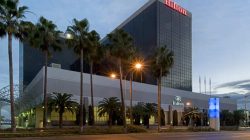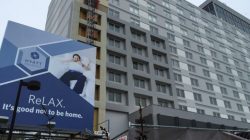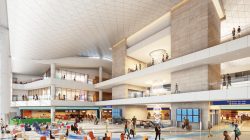When people think of Los Angeles International Airport (LAX), they think of grandeur: massive jumbo jets, Hollywood movie stars, palm trees and a pocket full of dreams. But more well-informed travelers know that the customer experience at LAX can also invoke feelings of chaos: gridlock traffic, dated terminals, overcrowded spaces and long taxiways.
It’s almost like LAX suffers from the same paradox as London Heathrow or New York JFK: it may be one of the best airports for plane-spotting and aviation photography, but is anxiety-inducing for planning a trip to visit the City of Angels, or make a flight connection. But LAWA is working hard to battle this perception and transform the LAX experience from a Horror Film to a Love Story over the next few years.
Editor’s Note: This is the second installment in a three-part series focusing on LAX Airport, including a media tour organized by Los Angeles World Airports to check-out the new facilities at LAX and China Eastern Airlines to view its in-flight products. This story focuses on the commercial state of LAX airport pertaining to terminal layouts, airlines serving LAX, and future projects designed to elevate the airport experience at LAX. Part III will detail the specifics behind the new LAX airport as the projects come to fruition.
LAX’s Perpetual Challenge: Layout and Design
LAX’s history pre-dates the evolution of the modern hub-and-spoke airport structures that our society is very familiar with today. Everything feels scattered and somewhat claustrophobic, with nine terminal buildings currently processing these 80 million plus passengers per year, four runways handling over 360,000 annual aircraft movements, and a hodgepodge of parking garages, rental car facilities and public transportation entries.
Effectively, LAX has only one primary access point by road: it is surrounded by the Pacific Ocean to the west, and is blocked by has four parallel runways, two to the north and two to the south. This means that there is one main artery to enter and exit the airport to the east via W. Century Blvd.
Then, there’s the flaw of the “horseshoe shape” airport terminal layout and design. As it exists today, LAX airport consists of nine separate terminal buildings, with terminals 1-3 on the north side, and terminals 4-8 on the south side. At the west end sits the Tom Bradley International Terminal (TBIT), which is sometimes referred to sometimes as Terminal B. It was constructed in the name of Tom Bradley, the first African American and longest-serving mayor of Los Angeles, in time for the 1984 Summer Olympic Games.
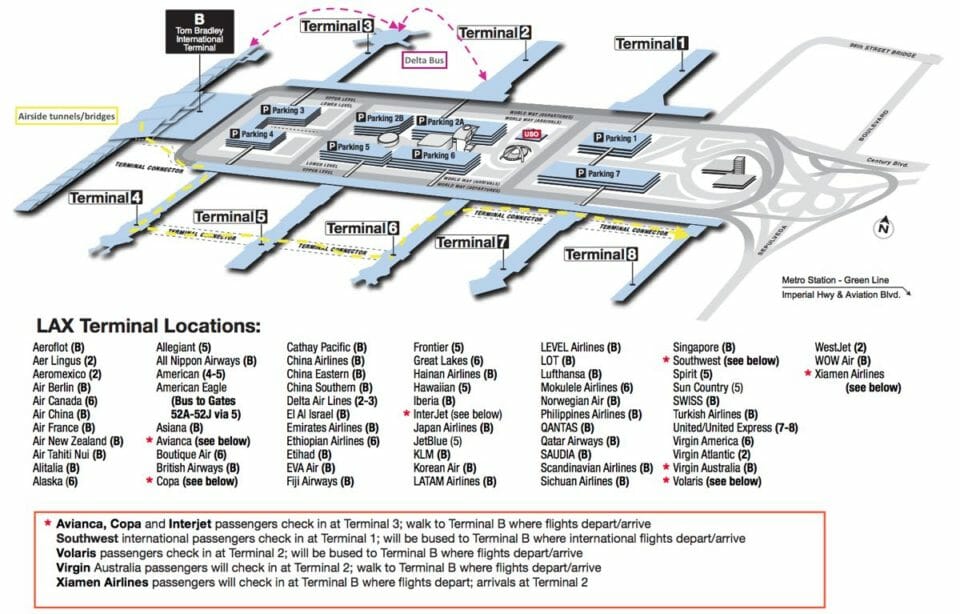
Prior to airline deregulation in the United States, it was far more common to see airlines fly more point-to-point routes on wide-body jets. At an airport like LAX, it wasn’t necessary to have consolidated buildings and airlines housed under one roof, as each individual airline could have their own building with a handful of gates in the terminal to accommodate passengers with the necessary amenities.
Additionally, the demands of the market had shifted as air travel became more commoditized, and carriers traded in luxurious 747s and 707s for narrow-body Airbus and Boeing jets, which were not only cheaper to operate, but also could be turned more quickly. Business travelers preferred schedule frequency over aircraft type, especially in the competitive, but lucrative, intra-Cal markets and all up and down the Pacific coast.
Another phenomenon took place at the turn of the century: global airline marketing partnerships began to take form through the creation of the OneWorld, SkyTeam and Star Alliance agreements. LAX, has always had the ability to attract exotic foreign-flag carriers due to its massive size and importance as an origin-and-destination port was quickly becoming a major domestic-to-international gateway.
The problem was, few of LAX’s terminals were connected on the sterile side. Thankfully, that has improved over the years with a new airside connector from the TBIT to Terminal 4, busses that transport customers from the TBIT to Terminals 1, 2, and 3 (with some restrictions) and underground tunnels that connect Terminals 4, 5, 6, 7, and 8.
LAX Today
Today, 91 domestic and international airlines serve the LAX airport. Of these, five consider categorize LAX airport as an official, “hub” or focus city, including American Airlines, Delta Air Lines, United Airlines, Alaska Airlines and Southwest Airlines.
Furthermore, international traffic patterns continue to grow, with several new carriers having added or intending to add intercontinental service to LAX, including Air China, Austrian Airlines, LOT Polish Airlines, Hong Kong Airlines, LEVEL Airlines, Norwegian, SAS and Xiamen Air, among others.
Despite complaints about increased traffic and noise, passenger traffic statistics are showing no signs of slowing growth. In 2016, passenger traffic grew 7.96%, from 74.9 million to 80.9 million. In 2017, it grew an additional 4.5% to 84.6 million, with an 8.7% surge in international passengers.
“People expect a much different airport today than they did before, and we’re dealing with an airport where the number of passengers is growing by millions,” says Becca Doten, Director of Public Relations at LAWA. “By 2020-2021, we’re looking 90 million passengers annually, the busiest O&D airport in the world. How do you get that number of people in and out without frustrating them?”
Though residents and visitors to Southern California have a selection of secondary airports to choose from as an access point to the region, such as Burbank Bob Hope Airport (BUR), Ontario International airport (ONT), Orange County John Wayne Airport (SNA), Long Beach Airport (LGB) and San Diego international airport (SAN), LAX is the predominant domestic and international port of entry to the 23.8 million inhabitants of Southern California.
Several carriers have started or expanded international long-haul services to LAX in 2017 and 2018, including Air China to Shenzhen (SZX); American Airlines to Beijing (PEK); Austrian Airlines to Vienna (VIE); and LOT Polish Airlines to Warsaw (WAW). Also, Hainan Airlines (HU) to Chengdu (CTU) and Chongqing (CKG); Hong Kong Airlines (HX) to Hong Kong (HKG); Level (IB) to Barcelona (BCN); Norwegian (DU) to Barcelona and Rome (BCN); United Airlines to Singapore (SIN); and Xiamen Air (MF) to Qingdao (TAO). In 2018, Delta will launch service to Amsterdam (AMS) and Paris (CDG).
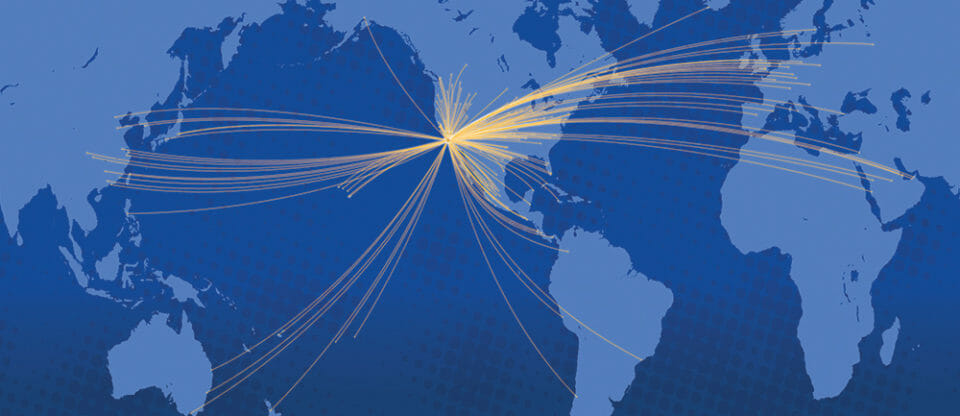
The Case for Change
Despite complaints about increased traffic and noise, passenger traffic statistics are showing no signs of slowing growth. In 2016, passenger traffic grew 7.96% to exceed over 80.9 million annual movements. In 2017, that figure grew to 84.55 million. Year over year, air carrier movements grew from 623,000 in 2016 to over 645,000 in 2017.
The reinvention of LAX dates back to 2007 when Denver-based Fentress Architects was contracted to redesign Tom Bradley International Terminal. The actual construction was completed by California-based Walsh Austin Joint Venture. The first phase (the North concourse) was done completed its first phase in 2013, while the second phase (South concourse, which is slightly longer) was completed in early 2015. In total, the TBIT redesign and rebuild project cost approximately $1.9 billion.
All of these enhancements are nice, but they are insufficient. Airlines such as Delta, American, United, Southwest, and Alaska have expressed fervent interest in maintaining and growing their hub operations at LAX. The problem is compounded given that the number of gates at LAX has been capped at 153 since 2015, which is problematic for an airport experiencing such growth.
Fortunately, the level of competition among such carriers incentivizes them to individually make investments in their terminals in order to improve the passenger experiences for the customers. Furthermore, even with the space constraints at LAX, developments such as the Mid-Field Satellite Concourse (MSC) will help alleviate some of the congestion.
But, with LAX potentially exceeding 90 million annual passengers by 2020, there’s a huge need to continue investing in improvement projects, especially for an airport with a single access point on the landside. Surpassing the 80 million passenger mark was also accompanied by a huge increase in vehicle traffic. LAX lags its competing airports in lacking several modern, critical systems and processes to be able to cater effectively to passenger movements of such volumes. For instance, 23 rental car lots scattered around the airport area, a standard which is becoming more and more obsolete in modern airports.
Furthermore, connectivity to public rail transportation is highly underserved. And the airport is badly in need of a better passenger transit system to move connecting traffic between terminals.
Up Next: from LAX to LA-WOW
Even in the current world, it is mesmerizing as it is to watch jumbo jets arriving at LAX from literally every corner of the earth. It’s not uncommon for people to exchange tips on where to find the best lighting and angles for aviation photography, or even host big meet-ups at the famous Inn-and-Out burger restaurant on Sepulveda Blvd to watch the heavies come overhead.
But at LAX airport, there is a big difference between watching planes and changing planes. Some might argue that the former is pleasant, while the latter should be avoided at all costs.
LAX’s fervent dedication to self-improvement is a multi-decade project that is not being completed in silos: the airport plans to overhaul everything, from people mover systems to terminal infrastructure to rental car facilities to its public website. The next installment will focus on the specifics of those changes, and what customers can look forward to in the years to come as the transit experience improves at LAX.


